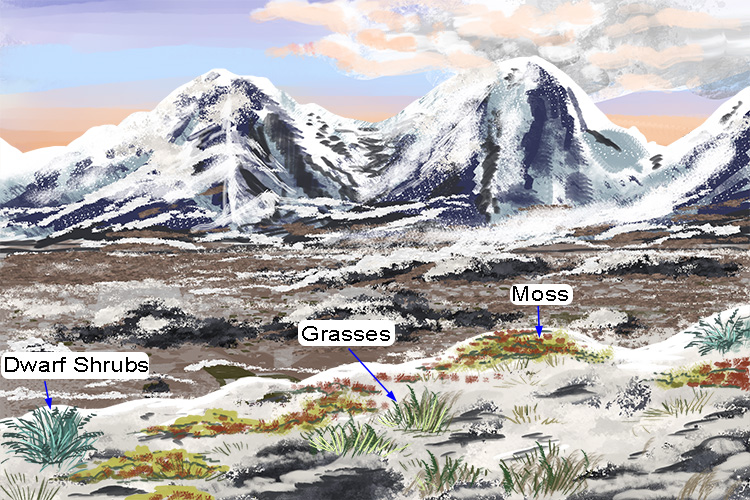Tundra – The flat, treeless Arctic regions of Europe, Asia and North America, where the ground is permanently frozen. Lichen, moss, grasses and dwarf shrubs can grow
To remember the meaning of the term Tundra, use the following mnemonic:
Tons of dramatic (Tundra) landscapes but no trees.

NOTE:
There is also Alpine tundra, e.g., in the Swiss Alps. So, two types: 1. Arctic tundra 2. Alpine tundra.
For most of the year, tundra lands are covered with snow, but a brief summer brings bursts of wildflowers.
Mountain goats, sheep, marmots and birds live in Alpine, or mountain, tundra. They feed on the tundra's low-lying plants and insects.
Cushion plants and other hardy flora survive in the mountain zones by growing in rock depressions, where it is warmer and they are sheltered from the wind.
Arctic tundra – where the average temperature is -30 to 20 degrees Fahrenheit (-34 to -6 degrees Celsius) – supports a number of animal species including Arctic foxes, polar bears, grey wolves, caribou, snow geese and musk oxen. The summer growing season – when the sun shines up to 24 hours a day – lasts just 50 to 60 days.




